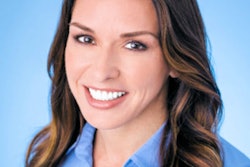
By now, you have determined your practice growth goals for 2020. Hopefully, you're focusing on the untapped potential in specific areas of your dental practice. Frequently, we find tremendous growth potential in hygiene departments. Building the hygiene department creates passive income for the dentist and builds long-term loyalty for your patients.
Ensure your hygiene department is healthy by seeing if you can say "yes" to all the points below.
Yes or no: We have a written hygiene philosophy of care.
 Kathy Edwards, RDH.
Kathy Edwards, RDH.A hygiene philosophy is a document written by the doctors to communicate their philosophy of care for hygiene treatment. It is easier to harness the synergy necessary to achieve goals when the doctor has shared a clear vision. On the other hand, inconsistency and confusion waste time while the staff attempts to second-guess the doctor's vision themselves. This is especially true for practices with more than one hygienist. It is only natural for team members to bring past philosophies they have learned. This document provides clarity from the dentists. It should address the following:
- When to provide periodontal therapy (4341-4342)
- When to provide D1110 versus D4346
- When to retreat
- When to refer
- When to dismiss
Yes or no: The treatment we provide and code supports the practice's philosophy of care and reaches healthy benchmarks in the dental industry.
Unless you refer your scaling and root planing cases to a periodontist, it could be a warning sign if your coding reflects more than 50% of your adult patients received a standard prophy (D1110). You will need to analyze the procedures provided over a 12-month period and compare your results with the hygiene philosophy of care. Does your coding match the philosophy? Just as your chart notes must reflect the treatment provided, the code you select must do the same. A healthy goal would be 50% of your patient base receiving a D1110 or D4346, 40% receiving a D4910, and the remaining in-active periodontal therapy as either a D4341 or D4342.
Yes or no: We have incorporated D4346 into the hygiene mixture of services.
D4346, sometimes called the "gingivitis code" became available for use on January 1, 2017. A variety of patients, hallmarked by healthy attachment levels with relatively no bone loss, will qualify. Many practices select this code when the patient presents with generalized moderate to severe gingivitis, orthodontic brackets making access difficult, or medication-induced gingival hyperplasia. All these situations can have healthy bone/attachment levels with unhealthy tissue. Your protocols should address the sequence of appointments to use for these situations.
Yes or no: Our hygienists calibrate probe readings to provide consistency.
It can be common for hygienists, when comparing probe readings with each other, to get different pocket depth readings on the same patient. Calibrating with a goal to stay within 1 mm of each other will provide better data for the practice and help the patient follow their progress as well. Accomplish this by probing volunteer staff members at a meeting and comparing results. Repeat this exercise periodically as a hygiene team and within a couple of weeks of a new hire in the hygiene department.
Yes or no: We have a team that works well together.
Systems and protocols provide consistent, high-caliber treatment. The best-designed systems are only as good as the team that walks those systems out!
Kathy Edwards, RDH, is Burkhart Dental Supply's senior practice consultant specializing in developing leadership skills to improve teamwork and key performance indicators for dental practices. You can reach Burkhart's Practice Support team at 800-665-5323 or [email protected].
The comments and observations expressed herein do not necessarily reflect the opinions of DrBicuspid.com, nor should they be construed as an endorsement or admonishment of any particular idea, vendor, or organization.


















